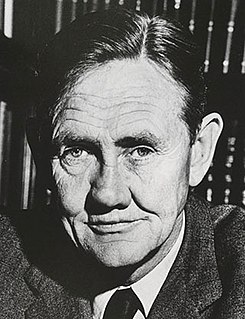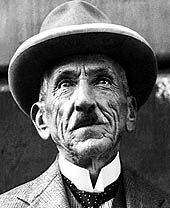
The Australian electoral system comprises the laws and processes used for the election of members of the Australian Parliament. The system presently has a number of distinctive features including compulsory enrolment, compulsory voting, majority-preferential instant-runoff voting in single-member seats to elect the lower house, the House of Representatives, and the use of the single transferable vote proportional representation system to elect the upper house, the Senate.

The 1998 Australian federal election was held to determine the members of the 39th Parliament of Australia. It was held on 3 October 1998. All 148 seats of the House of Representatives and 40 seats of the 76-seat Senate were up for election. The incumbent centre-right Liberal/National Coalition government led by Prime Minister John Howard of the Liberal Party and coalition partner Tim Fischer of the National Party defeated the centre-left Australian Labor Party opposition led by Opposition Leader Kim Beazley.

Federal elections were held in Australia on 9 October 2004. All 150 seats in the House of Representatives and 40 seats in the 76-member Senate were up for election. The incumbent Liberal Party of Australia led by Prime Minister of Australia John Howard and coalition partner the National Party of Australia led by John Anderson defeated the opposition Australian Labor Party led by Mark Latham.

The 1996 Australian federal election was held to determine the members of the 38th Parliament of Australia. It was held on 2 March 1996. All 148 seats of the House of Representatives and 40 seats of the 76-seat Senate were up for election. The centre-right Liberal/National Coalition led by Opposition Leader John Howard of the Liberal Party and coalition partner Tim Fischer of the National Party defeated the incumbent centre-left Australian Labor Party government led by Prime Minister Paul Keating.

Federal elections were held in Australia on 24 March 1990. All 148 seats in the House of Representatives and 40 seats in the 76-member Senate were up for election. The incumbent Australian Labor Party led by Bob Hawke defeated the opposition Liberal Party of Australia led by Andrew Peacock with coalition partner the National Party of Australia led by Charles Blunt. The election saw the reelection of a Hawke government, the fourth successive term.

Federal elections were held in Australia on 11 July 1987, following the granting of a double dissolution on 5 June by the Governor-General Sir Ninian Stephen. Consequently, all 148 seats in the House of Representatives as well as all 76 seats in the Senate were up for election. The incumbent Australian Labor Party, led by Prime Minister Bob Hawke, defeated the opposition Liberal Party of Australia, led by John Howard and the National Party of Australia led by Ian Sinclair.

Federal elections were held in Australia on 1 December 1984. All 148 seats in the House of Representatives and 46 of 76 seats in the Senate were up for election. The incumbent Labor Party led by Prime Minister Bob Hawke defeated the opposition Liberal–National coalition, led by Andrew Peacock.

Federal elections were held in Australia on 30 November 1963. All 122 seats in the House of Representatives were up for election. The incumbent Liberal–Country coalition government, led by Prime Minister Robert Menzies, won an increased majority over the opposition Labor Party, led by Arthur Calwell.

Federal elections were held in Australia on 5 March 1983. All 125 seats in the House of Representatives and all 64 seats in the Senate were up for election, following a double dissolution. The incumbent Coalition government in power since 1975, led by Malcolm Fraser and Doug Anthony, was defeated by the opposition Labor Party led by Bob Hawke.

Federal elections were held in Australia on 18 October 1980. All 125 seats in the House of Representatives and 34 of the 64 seats in the Senate were up for election. The incumbent Liberal–NCP coalition government, led by Prime Minister Malcolm Fraser, was elected to a third term, defeating the opposition Labor Party led by Bill Hayden.

Federal elections were held in Australia on 2 December 1972. All 125 seats in the House of Representatives were up for election, as well as a single Senate seat in Queensland. The incumbent Liberal–Country coalition government, led by Prime Minister William McMahon, was defeated by the opposition Labor Party under Gough Whitlam. Labor's victory ended 23 years of successive Coalition governments that began in 1949.

Federal elections were held in Australia on 25 October 1969. All 125 seats in the House of Representatives were up for election. The incumbent Liberal–Country coalition government, led by Prime Minister John Gorton, won the election with a severely diminished majority over the opposition Labor Party, led by Gough Whitlam. Both major parties had changed their leaders in the run-up to the election, the first time this had occurred since 1946.

Federal elections were held in Australia on 26 November 1966. All 124 seats in the House of Representatives were up for election. The incumbent Liberal–Country coalition government, led by Prime Minister Harold Holt, won an increased majority over the opposition Labor Party, led by Arthur Calwell.

Federal elections were held in Australia on 9 December 1961. All 122 seats in the House of Representatives and 31 of the 60 seats in the Senate were up for election. The incumbent Liberal–Country coalition led by Prime Minister Robert Menzies defeated the opposition Labor Party under Arthur Calwell. In his first election as Labor leader, Calwell significantly reduced the Coalition's margin, gaining 15 seats to leave the government with only a one-seat majority.

Federal elections were held in Australia on 22 November 1958. All 122 seats in the House of Representatives and 32 of the 60 seats in the Senate were up for election. The incumbent Liberal–Country coalition led by Prime Minister Robert Menzies defeated the opposition Labor Party, led by H. V. Evatt.

Federal elections were held in Australia on 29 May 1954. All 121 seats in the House of Representatives were up for election, but no Senate election took place. The incumbent Liberal–Country coalition led by Prime Minister Robert Menzies defeated the opposition Labor Party led by H. V. Evatt, despite losing the two-party preferred vote.

Federal elections were held in Australia on 28 April 1951. All 121 seats in the House of Representatives and all 60 seats in the Senate were up for election, due to a double dissolution called after the Senate rejected the Commonwealth Bank Bill. The incumbent Liberal–Country coalition led by Prime Minister Robert Menzies defeated the opposition Labor Party with a modestly reduced majority, and secured a majority in the Senate. Chifley died just over a month after the election.

Federal elections were held in Australia on 10 December 1949. All 121 seats in the House of Representatives and 42 of the 60 seats in the Senate were up for election. The incumbent Labor Party, led by Prime Minister Ben Chifley, was defeated by the opposition Liberal–Country coalition under Robert Menzies. Menzies became prime minister for a second time, his first term having ended in 1941.

Federal elections were held in Australia on 16 December 1922. All 75 seats in the House of Representatives, and 19 of the 36 seats in the Senate were up for election. The incumbent Nationalist Party, led by Prime Minister Billy Hughes lost its majority. However, the opposition Labor Party led by Matthew Charlton did not take office as the Nationalists sought a coalition with the fledgling Country Party led by Earle Page. The Country Party made Hughes's resignation the price for joining, and Hughes was replaced as Nationalist leader by Stanley Bruce.

Federal elections were held in Australia on 13 December 1919. All 75 seats in the House of Representatives, and 19 of the 36 seats in the Senate were up for election. The incumbent Nationalist Party, led by Prime Minister Billy Hughes, defeated the opposition Labor Party led by Frank Tudor.



















